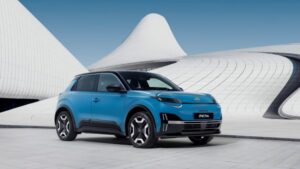HMRC introduces new EV mileage rates that recognize the cost difference between home and public charging, effective September 1.
The Government’s updated guidance on EV mileage rates creates a two-tier system for the first time. Business drivers can now claim different rates depending on where they charge their vehicles.
HMRC increased the home advisory electricity rate from 7p to 8p per mile. It’s also introducing a separate 14p per mile rate for public charging.
The home rate reflects domestic energy costs of 27.04p per kWh and average EV efficiency of 3.59 miles per kWh. The public rate uses 51p per kWh – the typical cost at slow or fast public chargers.
HMRC initially announced the public rate would be 12p per mile but corrected a calculation error that pushed it to 14p per mile.
The changes address a significant gap between actual charging costs and what drivers could claim back. Paua, a charging payment platform, calculated that drivers doing just 20% of business charging publicly would lose at least £200 annually under the old 7p rate.
Fleet industry groups welcomed the split rates but argued for a third tier covering ultra-rapid charging.
“It’s encouraging to see that HMRC continues to listen to the sector,” said Thomas McLennan, director of policy at the British Vehicle Rental and Leasing Association.
McLennan noted that the BVRLA and AFP have pushed for these changes since 2021. The collaboration resulted in regular AER reviews and now the public-private rate split.
“Focus now turns to a ‘rapid charging’ rate as the current rate isn’t reflective of what many drivers will be experiencing,” he added.
Peter Golding, CEO of fleet software specialist FleetCheck, said the 8p home rate seems fair and reflects real costs.
But he questioned whether 14p adequately covers highway charging needs.
“The 14p rate for highway charging is arguably low,” Golding explained. “It’s intended to cover slower public chargers but rapid charging costs are typically much higher – perhaps doubling.”
Ultra-Rapid Charging Concerns
Golding emphasized that ultra-rapid charging isn’t just convenient – it’s operationally necessary for many businesses.
“When electric cars and vans are used for longer journeys, employers don’t want staff sitting around waiting for slower charging to complete,” he said.
Rapid chargers get workers back on the road quickly, making EV operations more practical.
“Without rapid charging, the practicalities of operating EVs are less attractive,” Golding noted.
He called for HMRC to recognize that public charging infrastructure varies widely in speed and pricing. As faster chargers become more common across the network, the rate structure should reflect these differences.
Businesses can use higher rates where they can prove per-mile costs exceed the standard advisory rates.





